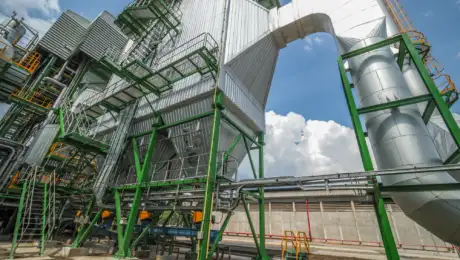
Crucial for the safe and efficient transportation of hazardous materials
During the transportation of specific materials, various hazardous scenarios can arise, one of which involves the generation of gases when these materials come into contact with water. In many cases, the gas produced is hydrogen, which poses a significant explosion risk when mixed with air. Additionally, contact with water may result in the release of toxic gases.
To address this concern, a standardized test method has been established and is detailed in the 'United Nations Recommendations on the Transport of Dangerous Goods, Manual of Tests and Criteria, Part III – 33.4.1.4' (referred to as Test No. 5: Test Method for Substances Releasing Flammable Gases on Contact with Water). This test is also outlined in the REACH directive. Gexcon has developed a comprehensive testing setup and is equipped to conduct tests on materials in accordance with these official documents.
Gexcon offers testing services for Class 4 Division 4.1 materials, often referred to as the 'UN 4.1 – Burn Rate Test.' This test serves to distinguish materials that exhibit minimal ignition tendencies when exposed to an ignition source from those that ignite and burn rapidly."
Providing peace of mind during the transportation of hazardous materials to ensure the protection of human life, property, and the environment.
Transportation certification FAQ's
-
1Why is transportation certification for hazardous materials important?
Testing to secure transportation classification is pivotal for achieving safety, regulatory adherence, and environmental standards, whilst also facilitating the smooth transportation of hazardous materials.
Those involved in hazardous materials transportation should consult with relevant regulatory authorities and standards organisations to ensure compliance with all necessary certifications and safety measures.
-
2Which materials are subject to transportation classification?
Hazardous materials that are subject to transportation certification include a wide range of substances. The specific materials subject to certification can vary by country and are often classified based on their hazardous properties.
Some common categories of hazardous materials subject to transportation certification include:
Explosives: These materials include fireworks, blasting agents, and other substances capable of causing explosions. Certification is essential to ensure safe transport and prevent accidents.
Flammable Liquids: Liquids with a low flash point are classified as flammable and include fuels, solvents, and certain chemicals. Certification is crucial for safe handling and transport.
Flammable Gases: Gases like propane, butane, and hydrogen fall into this category. Certification ensures safe handling and storage during transportation.
Flammable Solids: Materials that can ignite when exposed to an open flame or heat source, such as matches or magnesium, require proper certification.
Corrosive Materials: These materials can cause severe damage to containers and equipment during transportation and may include strong acids or bases.
Oxidisers: These materials promote the combustion of other substances and may include oxygen generators, peroxides, and other chemicals that require special certification.
Cryogenic Gases: Extremely cold gases, such as liquid nitrogen, are classified as cryogenic materials and require certification due to their unique handling requirements.
Combustible Liquids: These liquids have a flash point above a certain temperature but are still flammable. Certification is necessary to ensure safe transportation.
Pressurised Containers: Materials that are stored under pressure, such as compressed gases or aerosols, require certification to prevent leaks or explosions during transport.
These hazardous materials are often classified based on international regulations, such as the United Nations Recommendations on the Transport of Dangerous Goods (UN TDG), which provides a framework for the safe transportation of hazardous materials.
Compliance with these regulations and certification requirements is essential to protect human health, property, and the environment during the transportation of these materials.






